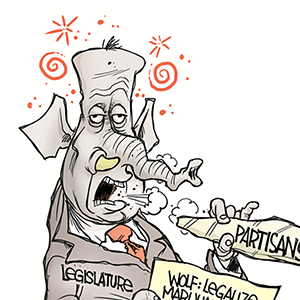Why Purchasing Used Vehicles Can Offer Excellent Long-Term Value
Published in Business Articles
For many drivers, the decision to buy a vehicle represents one of the most significant financial commitments they will make outside of purchasing a home. The car market constantly shifts with new models, technology upgrades, and consumer preferences. Amidst all this change, one fact remains consistent: buying a brand-new car can lead to rapid financial loss during the first few years of ownership. A used vehicle, on the other hand, can often deliver excellent long-term value for those who think carefully about cost, reliability, and performance. A pre-owned car has already experienced its sharpest depreciation and can provide a satisfying ownership experience without stretching one’s budget unnecessarily.
Avoiding Rapid Depreciation and Protecting Value
One of the biggest advantages of purchasing a used vehicle is avoiding the steep initial depreciation that affects new models. The moment a brand-new car is driven off the dealership lot, its market value begins to drop significantly. This drop often continues at a rapid pace throughout the first few years. When buyers choose pre-owned options, they allow someone else to absorb this early loss. By the time a vehicle reaches its third or fourth year, its value tends to stabilize, meaning the owner’s equity holds more consistently. A buyer considering large SUVs that often have high initial price tags can benefit from letting the first owner bear the early depreciation hit. Purchasing a used version allows the new owner to enjoy similar comfort, performance, and safety features without the staggering financial setback that accompanies a new purchase.
Expanding Choices Without Increasing Budget
A new car purchase often limits a buyer to a specific price range, trimming down the list of available features or models. Opting for a used car broadens those choices considerably. A budget that might only secure a compact sedan in the new car market could, in the used segment, open access to premium sedans, crossovers, or performance-oriented vehicles.
The used market’s variety offers options that better align with individual preferences for comfort, design, or technology. Buyers can often find higher trims, luxury interiors, and advanced driver-assistance systems that would be unaffordable in new models at the same price point.
Proven Reliability and Real-World Performance Data
When shopping for a new car, buyers depend on manufacturer specifications and early reviews to gauge reliability and performance. Used cars, by contrast, come with a wealth of real-world data. Owners and automotive experts publish detailed reports about maintenance patterns, recurring issues, and longevity. This information helps future buyers identify makes and models known for durability and cost-effective ownership.
A well-documented service history further strengthens confidence in the purchase, as it shows the vehicle has been cared for properly. Advances in modern engineering mean many cars today can comfortably exceed 150,000 or even 200,000 miles when maintained correctly. With this level of longevity, purchasing a used vehicle with moderate mileage does not mean inheriting a short lifespan. It means acquiring a proven machine with predictable upkeep requirements.
Slower Depreciation Over Time
The used car market tends to reward patience. Once a vehicle has passed its initial few years, its rate of depreciation slows considerably. A buyer who enters ownership at this stage stands to retain a larger portion of the car’s value over time. Should they later decide to sell or trade it in, the difference between purchase price and resale value will be less dramatic. This slower rate of depreciation makes used vehicles an appealing option for drivers who like to switch cars every few years. The predictability of value retention provides flexibility in upgrading without absorbing significant financial losses. In this way, the used car market aligns with long-term planning and smart asset management.
Reduced Environmental Impact and Resource Conservation
Choosing a used vehicle also carries benefits beyond personal finances. Manufacturing a new car consumes significant resources, from raw materials to energy, and contributes to environmental emissions. Extending the life cycle of an existing vehicle reduces the demand for new production and minimizes waste associated with manufacturing and disposal.
Each reused car keeps materials like steel, aluminum, and plastics in circulation longer, lessening the environmental burden of producing replacements. Many people seeking a more sustainable lifestyle find that buying used aligns naturally with their environmental goals. By giving a well-maintained vehicle a second life, buyers play a role in reducing overall automotive waste and energy consumption.
Purchasing a used vehicle combines practical financial sense with access to quality, performance, and sustainability. The ability to avoid early depreciation, expand model choices, rely on proven performance data, and enjoy lower ongoing costs makes used cars an intelligent option for value-minded buyers. By viewing the purchase as an investment rather than an impulse, buyers position themselves to experience ownership that rewards both their wallet and their driving experience for many years.










Comments